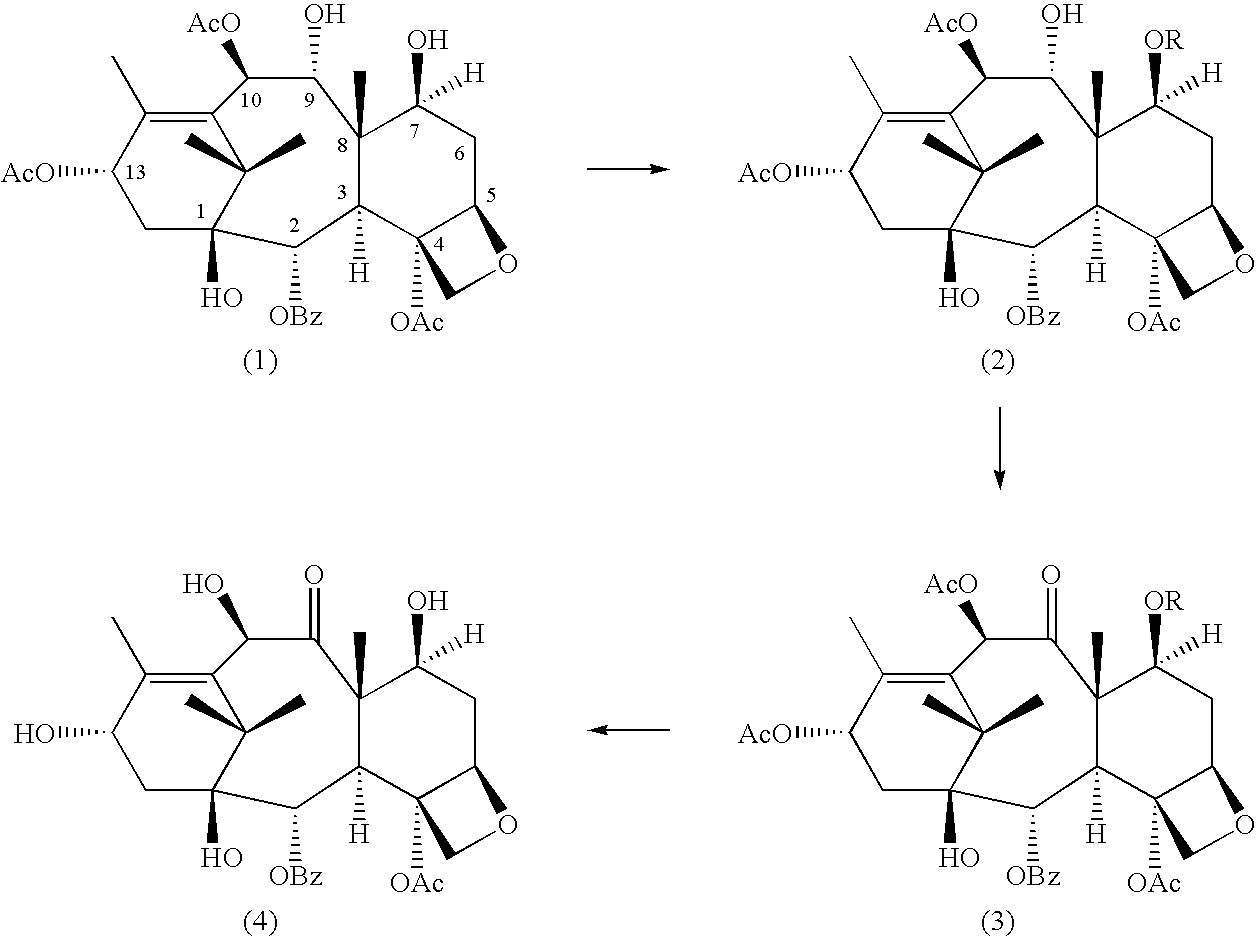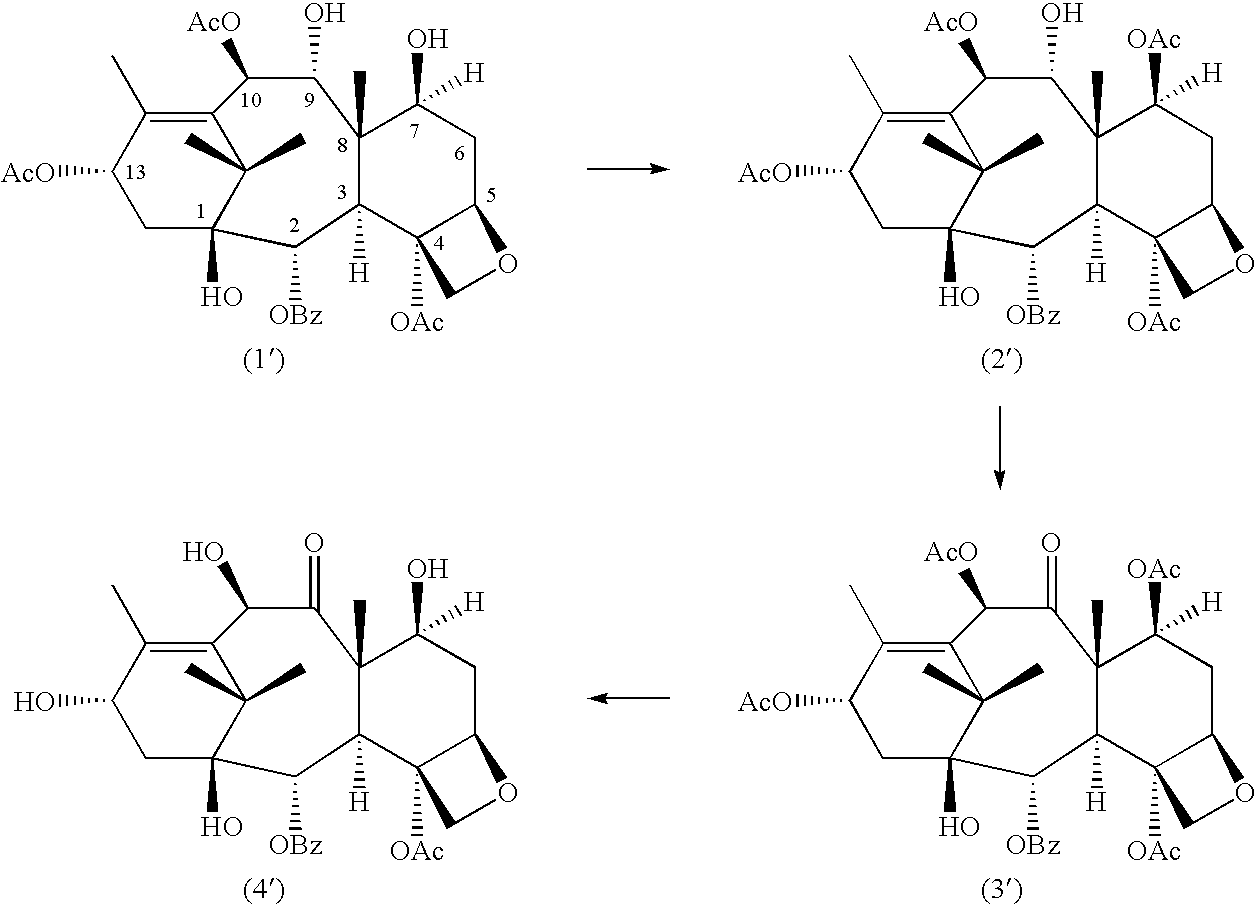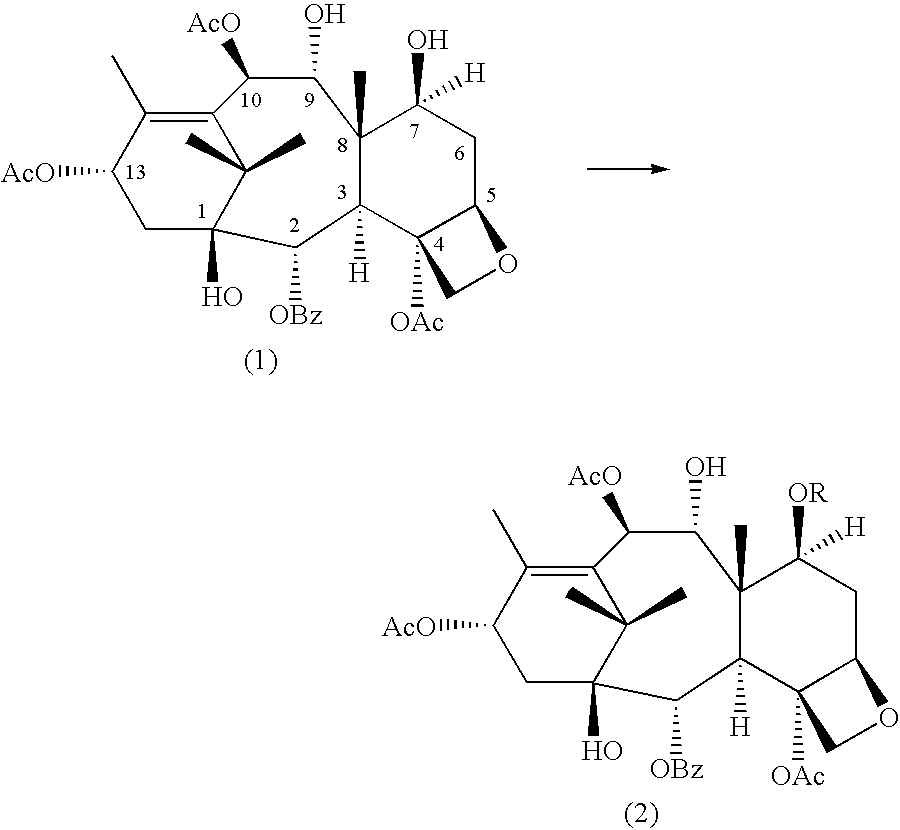Conversion 9-dihydro-13-acetylbaccatin III into 10-deacetylbaccatin III
a technology of acetylbaccatin and 9-dihydro-13acetylbaccatin, which is applied in the direction of organic chemistry, bulk chemical production, etc., can solve the problems of poor yield of finished products
- Summary
- Abstract
- Description
- Claims
- Application Information
AI Technical Summary
Problems solved by technology
Method used
Image
Examples
Embodiment Construction
Selective Protection of 7-hydroxyl Group of 9-dihydro-13-acetylbaccatin III
##STR3##
Several experiments were carried out using a variety of reagents to produce 7-OH protected-9-baccatin III with different protecting groups in the 7-position. The results of the experiments are listed in Tables 1 and 2 (for the sake of simplicity, all tables are found at the end of this description).
Additional experiments were conducted in which R in the above formulae was an acetyl group. ##STR4##
In the method of producing 9-dihydro-7,13-diacetylbaccatin III, 9-dihydro-13-acetylbaccatin III (0 1 mmole) was dissolved in 2.5 mL of dry methylene chloride and cooled to -23.degree. C. using a slurry of CCl.sub.4 and liquid nitrogen. 0.6 mmole of dry pyridine and a catalytic amount of DMAP (5% in mole) were added to the mixture followed by 0.3 mmole of acetic anhydride. The mixture was stirred for 1 5 h and then the reaction was quenched by the addition of 5.0 mL of water. The mixture was poured into 25 mL ...
PUM
| Property | Measurement | Unit |
|---|---|---|
| temperature | aaaaa | aaaaa |
| temperature | aaaaa | aaaaa |
| temperature | aaaaa | aaaaa |
Abstract
Description
Claims
Application Information
 Login to View More
Login to View More - R&D
- Intellectual Property
- Life Sciences
- Materials
- Tech Scout
- Unparalleled Data Quality
- Higher Quality Content
- 60% Fewer Hallucinations
Browse by: Latest US Patents, China's latest patents, Technical Efficacy Thesaurus, Application Domain, Technology Topic, Popular Technical Reports.
© 2025 PatSnap. All rights reserved.Legal|Privacy policy|Modern Slavery Act Transparency Statement|Sitemap|About US| Contact US: help@patsnap.com



